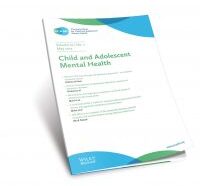Injecting drug use is a global issue: around the world an estimated 15.6 million people inject psychoactive drugs. People who inject drugs tend to begin doing so in adolescence, and countries that have larger numbers of adolescents who inject drugs may be at risk of emerging epidemics of blood borne viruses unless they take urgent action.
We mapped the global differences in the proportion of adolescents who inject drugs, and found that people who inject drugs were younger in countries with lower wealth. Many countries need to scale up harm reduction interventions to prevent blood borne viruses spreading through new generations.
People who inject drugs are often stigmatised and are engaging in a behaviour that can expose them to multiple health risks. Some of the most commonly injected substances are highly addictive: heroin and methamphetamine. As injecting increases the effects of these drugs, people can quickly develop tolerance and addiction. If unsterilized syringes are shared, injecting drug use can lead to transmission of blood borne viruses such as HIV and hepatitis C (Degenhardt et al., 2016). Injecting a drug also raises the risks for overdose. In the USA, where opioid use has reached epidemic proportions, people are more likely to die from overdoses than car accidents (Bursztynsky, 2019). There are also large social costs associated with injecting drug use, with this behaviour strongly linked to homelessness and acquisitive crime.
Injecting drug use was introduced to different countries at different times over the past 70 years, linked to the availability of heroin. The evidence suggests that the introduction of injecting drug use happened as recently as the 1990s in much of sub-Saharan Africa (Reid, 2009), whilst it had been an established problem in the UK since the 1960s. In Eastern European countries such as Georgia, there was a sharp increase in injecting drug use in the early 1990s following the fall of the Soviet Union (Bouscaillou et al., 2014).
New generations of young people are still starting to inject drugs. People who use drugs tend to begin doing so in adolescence, and young people who inject drugs are often part of other vulnerable groups (Degenhardt et al., 2017). Injecting drug use is associated with severe mental health problems, and the majority of people who use heroin report experiencing childhood abuse and neglect (Darke, 2011). Injecting drug use can exacerbate these existing issues, and people who inject drugs are overrepresented in prison populations (Dolan et al., 2015) and at increased likelihood of having unstable housing situations (Topp, Iversen, Baldry, & Maher, 2013).
Much of the research into the causes of injecting drug use focuses on individual factors, but we wanted to explore the effect of global development on youth injecting. A recent systematic review identified that there is wide country-level variation in the number of young people who comprise the population of people who inject drugs. By considering variation in countries, we hoped to be able to inform prevention and intervention efforts.
It’s important to note that there is effective intervention that can be used to reduce the harms of injecting drug use. For new generations of young people who are beginning to take up injecting drug use there are measures that can be put in place. Harm reduction programmes provide clean needles and syringes to reduce transmission of blood borne viruses. Opiate substitution therapy seeks to tackle the physical dependence on opiates that maintains injecting behaviour and has been shown to improve health outcomes (Platt et al., 2017). Younger injectors are newer to the practice and have less experience of the associated risks, so it is important to educate and link them to harm reduction programmes before chronic health problems become entrenched.
What we did
Through a global systematic review and meta-analysis we aimed to find data on injecting drug use in published studies, public health and policy documents from every country. We used these data to estimate the global percentage of people who inject drugs that are aged 15-25 years old, and also estimated this for each region and country. We wanted to understand what might underlie variation in the number of young people in populations of people who inject drugs, and so we used data from the Global Bank to identify markers of a country’s wealth, equality, and development.
What we found
Our study estimated that, globally, around a quarter of people who inject drugs are adolescents and young adults (Hines et al., 2020). Applied to the global population, we can estimate that equating to approximately 3·9 million young people inject drugs. As a global average, people start injecting drugs at 23 years old.
We found huge variation in the number of young people in each country’s population of people who inject drugs. Regionally, Eastern Europe had the highest numbers of young people amongst their populations who inject drugs, and the Middle Eastern and North African region had the lowest. In both Russia and the Philippines, over 50% of the people who inject drugs were aged 25 or under, and the average age of the populations of people who inject drugs was amongst the lowest observed.
In relation to global development indicators, people who inject drugs were younger in countries with lower wealth (indicated through Gross Domestic Product per capita) and had a shorter time period in which they’d been injecting drugs. In rapidly urbanising countries (indicated through urbanisation growth rate) people were likely to start injecting drugs at later ages than people in countries with a slower current rate of urbanisation. We didn’t find any relationships between the age of people who inject drugs and a country’s youth unemployment, economic equality, or level provision of opiate substitution therapy.
However, a large number of countries were missing data on injecting age and behaviours, or injecting drug use in general, which could affect these results.
What this means
A large percentage of people who inject drugs are adolescents, meaning that a new generation are being exposed to the risks of injecting – and we found that this risk was especially high in less wealthy countries. That a new generation are injecting psychoactive drugs indicates that the epidemic of injecting drug use is being maintained over time.
There are highly punitive policies towards drug use in the countries with the largest numbers of young people in their populations of people who inject drugs. Since 2016, thousands of people who use drugs in the Philippines have died at the hands of the police (Ellis-Petersen, 2018). Policies such as these mean that this new generation of injectors are missing out on harm reduction measures that could protect them from some of the long-term health problems associated with injecting drug use.
In contrast, Portugal has adopted a public health approach to drug use and addiction for decades, taking the radical step of taking people caught with drugs or personal use into addiction services rather than prisons (Bajekal, 2018). The rate of drug-related deaths and HIV infections in Portugal has since plummeted, as has the overall rate of drug use amongst young people: in our data Portugal has a high average age for its population of people who inject drugs.
If we do not want HIV, Hepatitis C and overdose to sweep through a new generation of adolescents, we urgently need to see more countries adopting the approach pioneered by Portugal, and scaling up access to harm reduction interventions to the levels recommended by the WHO (Larney et al., 2017).
Global development appears to be linked to injecting drug use, and the results suggest that countries with higher urbanisation growth are seeing new, older populations beginning to inject drugs. It may be that changes in environment are producing opportunities for injecting drug use that people hadn’t previously had. It’s estimated that almost 70% of the global population will live in urban areas by 2050, with the majority of this growth driven by low and middle-income countries. The results from our study suggest that there is a need to think about population health, and especially mental health, alongside urban development.
Despite the health risks of injecting drug use, and the urgent need to reduce risks for new generations, our study has revealed a paucity of data monitoring this behaviour. Most concerning, we know the least about youth injecting drug use in low- and middle-income countries: areas likely to have the highest numbers of young people in their populations of people who inject drugs. Due to the stigma and the illicit nature of injecting drug use it is often under-studied, but by failing to collect accurate data to inform public health and policy we are risking the lives of vulnerable young people.
Conflict of interest statement: No conflicts declared.
Acknowledgements
Lindsey Hines is funded by The Wellcome Trust. Adam Trickey is supported by the NIHR Health Protection Research Unit in Evaluation of Interventions at the University of Bristol.
References
Bajekal, N. (2018, August 1). Want to Win the War on Drugs? Portugal Might Have the Answer. Time. Retrieved from https://time.com/longform/portugal-drug-use-decriminalization/
Bouscaillou, J., Champagnat, J., Luhmann, N., Avril, E., Inaridze, I., Miollany, V., … Pataut, D. (2014). Hepatitis C among people who inject drugs in Tbilisi, Georgia: An urgent need for prevention and treatment. International Journal of Drug Policy, 25, 871–878.
Bursztynsky, J. (2019, January 16). Americans more likely to die from opioid overdose today than car accident. CNBC. Retrieved from https://www.cnbc.com/2019/01/15/americans-more-likely-to-die-from-opioid-overdose-than-car-accident.html
Darke, Shane. (2011). The Life of the Heroin User. Cambridge University Press.
Degenhardt, L., Charlson, F., Stanaway, J., Larney, S., Alexander, L. T., Hickman, M., … Vos, T. (2016). Estimating the burden of disease attributable to injecting drug use as a risk factor for HIV, hepatitis C, and hepatitis B: Findings from the Global Burden of Disease Study 2013. The Lancet. Infectious Diseases, 16, 1385–1398.
Degenhardt, L., Peacock, A., Colledge, S., Leung, J., Grebely, J., Vickerman, P., … Larney, S. (2017). Global prevalence of injecting drug use and sociodemographic characteristics and prevalence of HIV, HBV, and HCV in people who inject drugs: A multistage systematic review. The Lancet Global Health, 5, e1192–e1207.
Dolan, K., Moazen, B., Noori, A., Rahimzadeh, S., Farzadfar, F., & Hariga, F. (2015). People who inject drugs in prison: HIV prevalence, transmission and prevention. International Journal of Drug Policy, 26, S12–S15.
Ellis-Petersen, H. (2018, December 19). Duterte’s Philippines drug war death toll rises above 5,000. The Guardian. Retrieved from https://www.theguardian.com/world/2018/dec/19/dutertes-philippines-drug-war-death-toll-rises-above-5000
Hines, L. A., Trickey, A., Leung, J., Larney, S., Peacock, A., Degenhardt, L., … Lynskey, M. (2020). Associations between national development indicators and the age profile of people who inject drugs: Results from a global systematic review and meta-analysis. The Lancet Global Health, 8, e76–e91.
Larney, S., Peacock, A., Leung, J., Colledge, S., Hickman, M., Vickerman, P., … Degenhardt, L. (2017). Global, regional, and country-level coverage of interventions to prevent and manage HIV and hepatitis C among people who inject drugs: A systematic review. The Lancet Global Health, 5, e1208–e1220.
Platt, L., Minozzi, S., Reed, J., Vickerman, P., Hagan, H., French, C., … Hickman, M. (2017). Needle syringe programmes and opioid substitution therapy for preventing hepatitis C transmission in people who inject drugs. Cochrane Database of Systematic Reviews. https://doi.org/10.1002/14651858.CD012021.pub2
Reid, S. R. (2009). Injection drug use, unsafe medical injections, and HIV in Africa: A systematic review. Harm Reduction Journal, 6, 24.
Topp, L., Iversen, J., Baldry, E., & Maher, L. (2013). Housing Instability among People Who Inject Drugs: Results from the Australian Needle and Syringe Program Survey. Journal of Urban Health : Bulletin of the New York Academy of Medicine, 90, 699–716.


